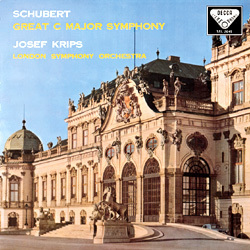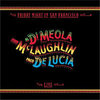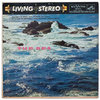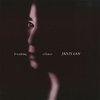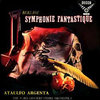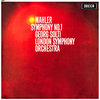AAA 100% Analogue This LP was Remastered using Pure Analogue Components Only from the Master Tapes through to the Cutting Head
Speakers Corner / Decca SXL 2045 - 180 Gram Virgin Vinyl - AAA 100% Analogue
Limited Edition - Pure Analogue Audiophile Mastering - Pressed at Pallas Germany
Speakers Corner 25 Years Pure Analogue This LP is an Entirely Analogue Production
The horn that opens Schubert's Symphony 9, in the famous recording by Josef Krips and the London Symphony Orchestra (LP, Decca/Speakers Corner SXL 2045), didn't just play the line—it sang it. Each note was individually shaped, as if by a human voice: amazing. - Stereophile
Stereophile Magazine Record to Die For!
Wonderful Sonics This recording has wonderful sonics, including lush strings and raspy brass presentation. The 3D soundstage is great. Top notch.5/5lpview
This is Schubert’s longest symphony, and its music has been described as heavenly. The symphony is typically and specifically Schubertian in its form, occupying a position in the history of music between Beethoven, Bruckner and Mahler – right on the threshold which separates classicism from romanticism.
It is hard to say if Josef Krips ever succeeded in making a finer recording. The presentation has a direct, unforced spontaneity, confirming that Krips had an intuitive understanding of Schubert’s compositions. The orchestra plays with dynamic vivacity without ever sounding aggressive. The interpretation of the two final movements is delightful in its airy exhilaration: swaying in a dance-like rhythm, tripping lightly through virtually every key there is, and in between, in the Scherzo, the gravity of the trio. The Finale, again, is merry in character with triplets rushing past, and the listener revels in every single repetition as the magnificence of this work reveals itself.
The inspired orchestra does full justice to the music and renders an interpretation in the Viennese tradition at its very best. This recording simply cannot be surpassed in terms of performance or sound quality – it is a must not only for the lover of Schubert’s music.
The 1978 Penguin Guide to LPs wrote, "Josef Krips never made a finer record than this ... The performance itself has a direct, unforced spontaneity, which shows Krips' natural feeling for Schubertian lyricism at its most engaging. The playing is polished yet flexible, strong without ever sounding aggressive. In the two final movements Krips finds an airy exhilaration which makes one wonder however other conductors can keep the music earthbound as they do. The pointing of the trio in the scherzo is delectable, and the feathery lightness of the triplets in the finale makes one positively welcome every single one of its many repetitions. As a whole this reading represents the Viennese tradition at its very finest."
This is one of the most respected and revered performances of Schubert's "Great" Symphony because of its combination of Krips' passion and classicism
Musicians:
- London Symphony Orchestra
- Josef Krips (conductor)
Recording: May 1958 at Kingsway Hall in London by Kenneth E. Wilkinson
Production: Erik Smith
Selections:
Schubert
Symphony No. 9 in C Major
1. First Movement: Andante
2. First Movement: Allegro Ma Non Troppo
3. Second Movement: Andante Conmoto
4. Third Movement: Scherzo
5. Fourth Movement: Allegro Vivace
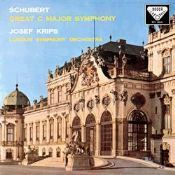

25 Years pure Analogue
Are your records completely analogue?
Yes! This we guarantee!
As a matter of principle, only analogue masters are used, and the necessary cutting delay is also analogue. All our cutting engineers use only Neumann cutting consoles, and these too are analogue. The only exception is where a recording has been made – either partly or entirely – using digital technology, but we do not have such items in our catalogue at the present time
Are your records cut from the original masters?
In our re-releases it is our aim to faithfully reproduce the original intentions of the musicians and recording engineers which, however, could not be realised at the time due to technical limitations. Faithfulness to the original is our top priority, not the interpretation of the original: there is no such thing as a “Speakers Corner Sound”. Naturally, the best results are obtained when the original master is used. Therefore we always try to locate these and use them for cutting. Should this not be possible, – because the original tape is defective or has disappeared, for example – we do accept a first-generation copy. But this remains an absolute exception for us.
Who cuts the records?
In order to obtain the most faithful reproduction of the original, we have the lacquers cut on the spot, by engineers who, on the whole, have been dealing with such tapes for many years. Some are even cut by the very same engineer who cut the original lacquers of the first release. Over the years the following engineers have been and still are working for us: Tony Hawkins, Willem Makkee, Kevin Gray, Maarten de Boer, Scott Hull, and Ray Staff, to name but a few.
At the beginning of the ‘90s, in the early days of audiophile vinyl re-releases, the reissue policy was fairly straightforward. Companies such as DCC Compact Classics, Mobile Fidelity, Classic Records and others, including of course Speakers Corner, all maintained a mutual, unwritten code of ethics: we would manufacture records sourced only from analogue tapes.
Vinyl’s newfound popularity has led many other companies to jump on the bandwagon in the hope of securing a corner of the market. Very often they are not so ethical and use every imaginable source from which to master: CDs, LPs, digital files and even MP3s.
Even some who do use an analogue tape source employ a digital delay line, a misguided ’80s and ‘90s digital technology that replaces the analogue preview head originally used to “tell” the cutter head in advance what was about to happen musically, so it could adjust the groove “pitch” (the distance between the grooves) to make room for wide dynamic swings and large low frequency excursions. Over time analogue preview heads became more rare and thus expensive.
So while the low bit rate (less resolution than a 16 bit CD) digital delay line is less expensive and easier to use than an analogue “preview head”, its use, ironically, results in lacquers cut from the low bit rate digital signal instead of from the analogue source!
Speakers Corner wishes to make clear that it produces lacquers using only original master tapes and an entirely analogue cutting system. New metal stampers used to press records are produced from that lacquer. The only exceptions are when existing metal parts are superior to new ones that might be cut, which includes our release of “Elvis is Back”, which was cut by Stan Ricker or several titles from our Philips Classics series, where were cut in the 1990s using original master tapes by Willem Makkee at the Emil Berliner Studios. In those cases we used only the original “mother” to produce new stampers.
In addition, we admit to having one digital recording in our catalogue: Alan Parsons’ “Eye in the Sky”, which was recorded digitally but mixed to analogue tape that we used to cut lacquers.
In closing, we want to insure our loyal customers that, with but a few exceptions as noted, our releases are “AAA”— analogue tape, an all analogue cutting system, and newly cut lacquers.
60 Years Pallas
Audiophile Vinyl - Made in Germany For over 60 years the family business in the third generation of the special personal service and quality "Made by Pallas" is known worldwide. Our custom PVC formulation produces consistently high pressing quality with the lowest surface noise in the industry. Our PVC complies with 2015 European environmental standards and does not contain toxic materials such as Lead, Cadmium or Toluene. Our vinyl is both audiophile and eco-grade!
